Knowledge Communications
Where is the Knowledge we have Lost in Information ? : (Knowledge Communications Project)
Where is the Wisdom we have Lost in Knowledge ? : (Biomimicry Cognitive Design Approaches)
Critical Reflection
The Knowledge Communications project offers a profound shift in how we perceive connected technologies. By focusing on the services and knowledge derived from connectivity, it challenges us to think beyond infrastructure and consider the broader implications for society. The integration of AI and the acknowledgment of historical precedents provide depth to the discussion, while the introduction of the Internet of Space points to future possibilities.
Overall, this initiative encourages a more holistic understanding of connectivity, urging stakeholders to prioritize meaningful interactions and services over mere device interconnectivity.
With the increasing popularity of Internet-of-Things (IoT) supplied over the backbone network, services such as: web browsing, video conferencing and video on demand, it is for sure only a matter of time before users will demand higher bandwidth mobile access. Advances in displays, battery technology and processing power have also made it possible for users to afford and carry around laptops, notebooks and smartphones. The prospects for the delivery of all associated services to these users is, however, crucially dependent on the development of low cost physical layer delivery mechanisms. Market needs to consolidate the data into one single handset.
The IoT (Internet-of-Things) is a modern-day buzzword with lofty expectations to have a profound impact on society. However, what is it, how will we use it and what will that impact be? Is it exciting or will it be frightening? Will it be helpful? Who will be the winners and who will be the losers? These are important questions, especially when you consider that IoT may have as great an impact on society as computers and the Internet have had. Maybe even more. In the Internet of Things, connectivity to people and things comes from Earth-bound wired and wireless networks. However, fewer technologists know about the evolving Internet-of-Space (IoS), where connectivity comes from space-based satellites and—in the near future—lower altitude airborne platforms based on drones and even balloons.
The IoT is typically a set of “things” connected via the cloud (Internet) to a server that stores and analyzes data (trends, alerts, etc.) and then communicates with a user via an application running on a computer, tablet or a smartphone. However, it is not the “things connected to the internet” that create value, it is the "knowledge" conveyed through use of Artificial Intelligence (AI) and Machine Learning. The latter is a modern term for the good old "Pattern Recognition" in signal processing. In AI, an expert system is a computer system that emulates the decision-making ability of a human expert. Expert systems are designed to solve complex problems by reasoning through bodies of knowledge, represented mainly as if–then rules rather than through conventional procedural code. The first expert systems were created in the 1970s and then proliferated in the 1980s. An expert system is divided into two subsystems: the inference engine and the knowledge base.
The knowledge base represents facts and rules. The inference engine applies the rules to the known facts to deduce new facts.
The term "IoT" is somewhat confusing and deserves some clarification. To many people IoT implies "mobility" which brings "wireless" into the picture, whereas in reality, many applications, like in smart home services, do not involve mobility and not even wireless. Actually, IoT was used before the advent of Internet, using telephone lines in a wired network. When considered from this perspective – as a service that gathers, analyzes and transmits data – the IoT has been in existence for years or even decades. For example, in the early days of wireless telephones (long before the term IoT started floating around), vending machines “called” a dispatch center when running out of a product, transmitting full inventory information at the same moment. The dispatcher then sent a refill order for that machine. Entirely more efficient than some guy in a truck just driving around to every hotel or office building and manually checking each vending machine. Another “old” IoT application would be the ordinary home or building security system, with a set of motion sensors, wired to a patch panel, and from there connected to a phone line and an alarm service center. If the house is armed and a sensor is triggered, the alarm service center calls the house, the neighbors or the police. Note that, this pure IoT application (in the sense of Internet of Services) is also fully wired. The IoT does not need to be wireless. This particular IoT application existed before the Internet, making ADT Security Services one of the older IoT companies existing today. The word "Things" in the "Internet-of-Things" confuses the true objective behind this concept. May be the term "Internet-of-Services" is a better term to use. For a better understanding of the subject, the readers may check out Figures-1 and 2 - below.
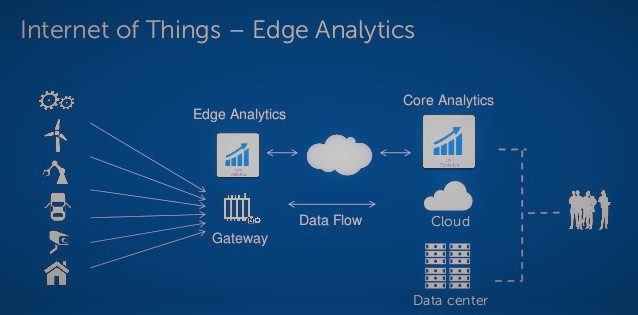
Figure-1 Internet-of-Things Idea
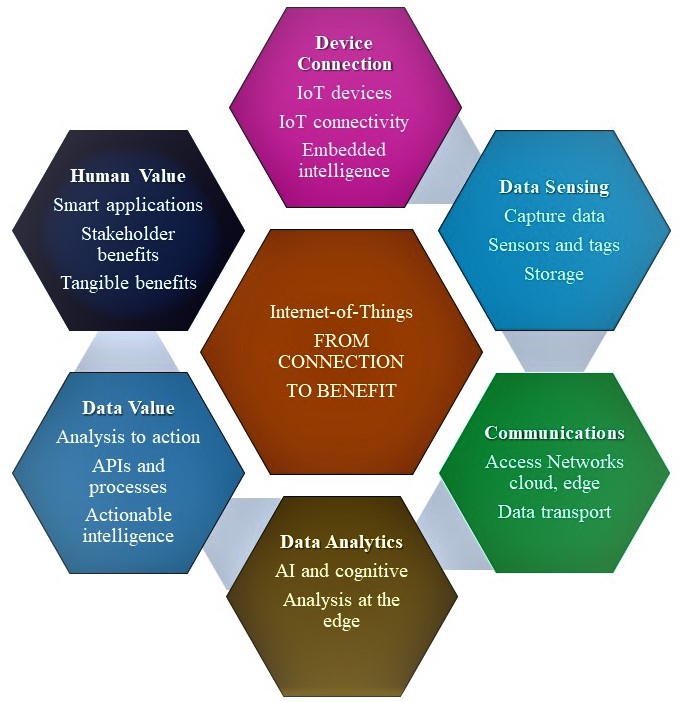
Figure-2 Internet-of-Things from Connecting Devices to Creating Human Value.
Under data value analysis to action; API is the acronym for Application Programming Interface, which is a software intermediary that allows two applications to talk to one another.
To summarize, a “thing” is any object with embedded electronics that can transfer data over a network — without any human involvement. Wearable devices, environmental sensors, machinery in factories, components in a vehicle or devices in homes and buildings can all be connected to deliver insights and drive transformation .So imagine if you had smart devices in your home, your car, your workplace ─ or even on yourself, IoT can make life easier and reinvent the way we interact with the physical world. The number of internet-enabled data devices is rapidly outpacing the number of humans on the planet. Recent estimates show ~20 billion IoT devices in 2025, with projections reaching ~31 billion by year’s end—and potentially 40 billion by 2030.
Through research and education, we explore the potential of the IoT. We ask not only how to create connected products but how to connect them in a meaningful way, in order to improve people’s lives, bring people together, and enrich human-to-human interaction through device-to-device connections.
The Thinking Machine (Artificial Intelligence in the 1960s)
Artificial intelligence (AI) is being used by human resource departments to assist in understanding how employees feel about their work, The Wall Street Journal reports. AI does a better job than humans at gauging worker emotion and satisfaction through the language used in surveys, according to the research. At First Horizon National, a bank in Memphis, a team of six human resource personnel would work for three months to understand the bank's 3,500 employee surveys. Managers would then spend another five months adjusting policy in accordance with the data. AI gave the company almost instant results. AI can help bosses build better workplaces.
The IoT brings together people, processes, data and things to make networked connections more relevant and valuable than ever before. According to a Cisco study published in 2013, the IoT will Create $14.4 Trillion of Value at Stake for Companies and Industries globally over the next decade. The value at stake is the potential bottom-line value that can be created, or that will migrate among private-sector companies and industries, based on their ability to harness IoT over the next few years.
To address the bit rate limitation problems of current wireless systems, researchers examine the concept of adaptive rate delivery of future mobile / portable smart services.
Examples of physical layer technologies are Cellular, Wireless LANs, and Optical Wireless (OW) for the future Smart High-Bandwidth Islands, such as; classrooms, hotels, homes, shopping malls, airports, train stations, planes, spacecrafts, etc.
Consider the area of Smart Home Networking, when every home will be illuminated with bright visible LED light that can also be considered as an extremely high-frequency communications carrier signal. We are entering a new era of global connectivity. The expectation from consumers for not only ubiquitous but also seamless data analytics (knowledge data), data (digital information, spam included), voice, video services presents a significant challenge for today’s telecommunications networks.
Sensor networks are also increasingly being used for monitoring and controlling vital operations in industries, hospitals, and military installations and vehicles. Current research trends concentrate on Radio Frequency (RF) technology for sensor communications. However, OW communications or Visible Light Communications (VLC) can offer a much higher data rate or higher reuse factor.
In addition, we introduce a novel idea coined; “Internet-of-Light” using light bulbs with IPV6 addresses that are available on the market now. Each bulb adds a new node to the network and it can address the needs of both IoT and IoS. It is extremely secure at physical layer and can be applied to many real and necessary service areas; e.g.: manufacturing, transportation, healthcare, communications, sensing and navigation, to name a few. These are all essential service areas.
The most compelling story of how Internet-of-Light (IoL) will transform our world is the one still being written: the future of lighting, communications, sensing, navigation and the birth of a new enterprise lighting network.
............................................................... Optical Internet-of-Things

Figure-3 Manufacturing by Robot Arms using the Internet-of-Light (IoL) Concept

Figure-4 Wireless Sensor Networks
As we step further into the 21st century, the demand for sustainable energy-efficient technology grows higher. The important area of electric lighting, currently dominated by decades-old incandescent and fluorescent sources, is being taken over by white light emitting diodes, which are solid state devices with much greater energy savings. Replacement of current inefficient lighting by these LEDs will result in reduction of global carbon dioxide emissions, a major cause of global warming, among other things. White LEDs hold the potential, in the field of photonics, to be as transformational as the transistor was in electronics. This core device has the potential to revolutionize how we use light, including not only for illumination, but also for communications, sensing, navigation, imaging, and many more applications. In the tutorial listed below, we highlight some of the potentials.
Sustainable Energy-Efficient Wireless Applications Using Light
By: Mohsen Kavehrad
IEEE Communications Magazine, December 2010.
Wireless communications by infrared (IR) or visible light or ultraviolet light is inherently secure, since it is usually confined within an enclosure. It offers no interference to existing RF sensing or communication infrastructure. It is unregulated worldwide unlike RF spectrum, and small devices can be manufactured that are suitable for miniaturized sensors.
_____________________________________
Data Center (DC) is a critical piece of the infrastructure supporting our society. The design of a robust DC network fabric is challenging as it must satisfy several goals, viz., high performance, low equipment and management cost, incremental expandability to add new servers, and other practical concerns such as cabling complexity, and power and cooling costs. To address these problems, recent research works suggest the incorporation of wireless communication technology into DC networks. Wireless links can be used either to augment conventional wired DC networks, or to realize a pure wireless DC network. There are two candidate wireless technologies; Radio Frequency (RF) and FSO , also known as optical wireless communications (OWC) . In case of RF, researchers focus on 60 GHz RF technology due to its short range and high bandwidth. However, RF-wireless based augmented solutions offer only limited performance improvement, due to inherent interference and range constraints of RF links. The 60 GHz RF beam suffers excessive loss (~ 90 dB), even over a 10 meters range.
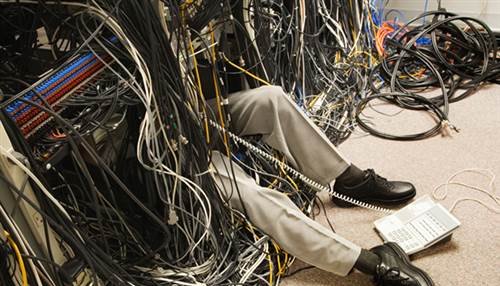
Figure-1 Wired Data Center
The project envisions and delivers on a DC network design approach that is radically different from prior architectures: a fully flexible, all-wireless fabric using Free-Space Optics (FSO) communication links, which essentially use laser beams to wirelessly transmit data through air. Although outdoor FSO links are challenging to operate under adverse weather conditions, their use in a temperature-controlled data center environment offers enormous and untapped potential in information-handling capacity. The proposed network design equips each rack of servers with a number of FSO devices, each of which can be "steered" in real-time to wirelessly communicate with another FSO device on a different rack.
In FSO communications, a high-speed modulated light beam propagates in free space without fibers involved. FSO combines the flexibility of wireless communications and the high capacity of optical communications . However, traditional FSO systems for outdoor applications have a large size, high power consumption and high cost. Moreover, FSO link requires precise line-of-sight alignments that suffer from environmental factors (e.g., rack vibrations or temperature changes), and traditional static FSO systems are not reconfigurable due to the fixed point-to-point links.
For reconfiguring FSO links, beam steering can be accomplished by changing the refractiv- index of the medium through which the beam is transmitted or by the use of mirrors, prisms, lenses, or rotating diffraction gratings. Optical beam steering approaches include mechanical mirror-based gimbals, GM mechanisms that rotate mirrors, Risley prisms, phased-array diffraction optics, and micro-electromechanical system (MEMS) using micro-mirrors. Traditional gimbals-based Acquisition-Pointing-Tracking (APT) systems are slow, bulky, expensive, and power hungry, which cannot meet the requirements of reconfigurable data centers. Galvanometer mechanisms (GM) have the small size, low cost and large steerable angle (~40 degree), but at the cost of low steering speed (~60 Hz) and high power consumption (~W). MEMS-based beam steering are much speedier (~kHz), more precise and reliable, and requires a lower power (~mW), however, are restricted to small mirrors (1-8mm) and a smaller coverage cone (~10 degree). However, we can use the beam expander to adjust the beam size and wide-angle field fisheye lens to magnify the optical scan-angles. As a promising beam steering approach for reconfigurable data center, we will investigate the MEMS-based beam steerable FSO link for a flexible Wireless DC Inter-Rack Network.
Inspired by the promise of re-configurability, this research presents Free-space optical Inter-Rack nEtwork with high
FLexibilitY (FireFly). An inter-rack network solution that pushes DC network design to the extreme on three key fronts: all links are reconfigurable; all links are wireless; and non-top-of-rack switches are eliminated altogether. This vision can offer significant benefits in terms of increased flexibility, reduced equipment cost, and minimal cabling complexity. More importantly, the arrangement helps the energy conservation challenge. In order to achieve this vision, we need to look beyond traditional RF wireless solutions due to their interference footprint, which limits range and data rates. Thus, we make the case for using beam steerable free-space optics (FSO). We demonstrate the viability of this architecture by building a proof-of-concept prototype of a steerable small form factor FSO device using commodity components, and developing practical heuristics to address algorithmic and system-level challenges in network design and management. For re-configurability, we need a mechanism to steer the laser beam from one receiver to the next quickly. Moreover, since the same link may be steered to receivers at different distances, the same optical design should work for the varied link-lengths. In addition, a single FSO device assembly, including beam steering and alignment machinery, should have high efficiency in terms of size, cost and power consumption. Hence, we proposed and demonstrate a reconfigurable bidirectional 10 Gbps FSO system incorporated with smart beam acquisition and tracking mechanism based on gimbal-less two-axis MEMS micro-mirror and retro-reflective film marked aperture. The fast MEMS-based beam acquisition switches laser beam of FSO terminal from one rack to the next for reconfigurable networks, and the precise beam tracking makes FSO device auto-correct the misalignment in real-time.
Experiment Setup of 2D-MEMS beam steering mechanism to switch FSO links is shown in Figure- 2. For the purpose of beam acquisition, we use a visible red laser beam to search for the target receiver aperture. After the line-of-sight link is established, the beam steering mechanism points the beams to the receiver aperture center with auto-tracking alignment. We use a BERT scope to generate a pseudorandom-bit-sequence (PRBS) data stream at 10 Gbps bit rate. The BERT outputs the differential electrical signals to a SFP+ evaluation boards that drive a SFP+ module. The SFP+ module emits optical signals at wavelength of ITU-32 (1551.72 nm) and optical power of 0.3 dBm. The laser beam propagating out of the end of a single mode optical fiber is collimated at divergence angle of 0.032 degree by a fiber collimator. A beam-splitter integrates the collimated communication laser beam with the visible red laser beam precisely. We measured the optical power loss and bit error rate performance of steerable FSO links in various directions.
Experimental results suggest that the MEMS based beam steerable FSO links hold considerable promise for the future reconfigurable wireless datacenter networks.
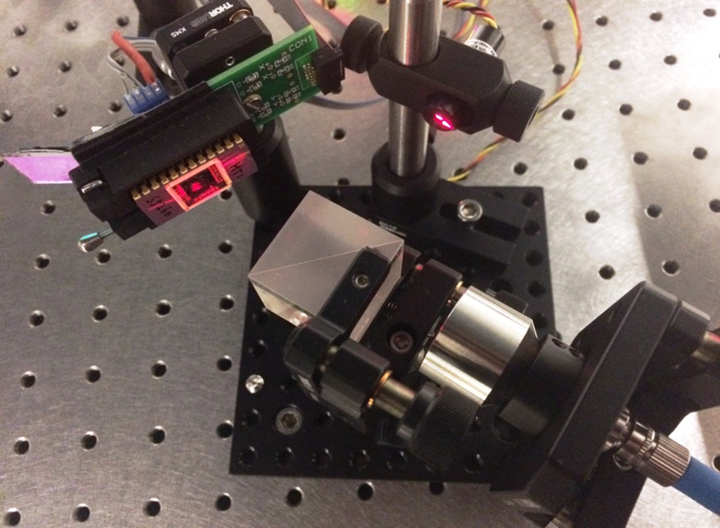
Figure-2 Experiment Setup of 2D MEMS beam steering mechanism to switch Free Space Optical Communication links.
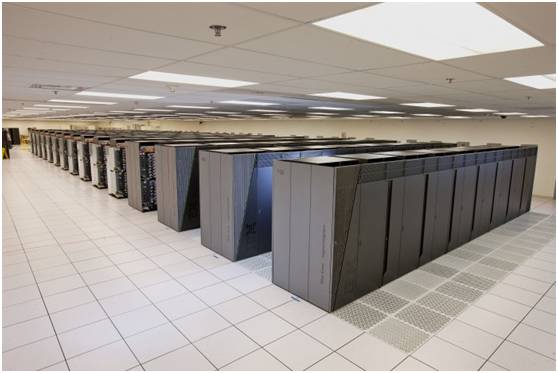
Figure-3 A Clean Data Center
This concept only works in a clean Data Center, as shown in Figure-3. The steering ability enables a dynamic network that adapts to the prevailing network traffic.
Seminars and Papers
- M. Kavehrad " MEMS-Based Reconfigurable Optical Wireless Networking in Data Centers," Proceedings of IEEE Photonics Conference, (Invited Paper), Orlando, Florida, October 2017.
- Cees Links, "The Impact of IoT Demystified," White Paper, Qorvo, July 2017.
- M. Kavehrad "Next Generation Data Center Interconnection Networks," Proceedings of IEEE Photonics Society Summer Topical Meeting, (Invited Paper), San Juan, Puerto Rico, July 2017.
- M. Kavehrad, P. Deng, H. Gupta, J. Longtin, S.R. Das, V. Sekar, "FireFly; Reconfigurable Optical Wireless Networking Data Centers", Proceedings of SPIE Photonics West, San Francisco-CA., January 2017.
- M. Kavehrad, S. R. Das, H. Gupta, J. Longtin and V. Sekar, " Novel architecture for reconfigurable optical wireless networking data centers", Online SPIE Photonics West Newsroom,(http://spie.org/newsroom/6821-novel-architecture-for-reconfigurable-optical-wireless-networking-data-centers ), San Francisco-CA., January 2017.
- Peng Deng, Mohsen Kavehrad and Yan Lou, “MEMS-based beam steerable free space optical communication link for reconfigurable wireless data center,” Proceedings of SPIE Photonics West, San Francisco-CA., January 2017.
- M. I. Sakib Chowdhury, Mohsen Kavehrad, Weizhi Zhang, and Peng Deng, "Combined CATV and very-high-speed data transmission over a 1550-nm wavelength indoor optical wireless link," in Proc. SPIE, vol. 9010, pp. 901009-1 - 901009-8, 2014.
- M. I. Sakib Chowdhury, Mohsen Kavehrad, and Weizhi Zhang, "Cable television transmission over a 1550-nm infrared indoor optical wireless link," Optical Engineering, vol. 52, no. 10, pp. 100503-1 - 100503-3, 2013.
- L.A. Zadeh, "A theory of approximate reasoning, Machine Intelligence," Volume-9, J. Hayes, D. Michie, and L.I. Mikulich (eds.), 149-194. New York: Halstead Press, 1979.
- IEEE Spectrum: Data Centers of the Future Could Send Bits Over Infrared Lasers Instead of Fiber Optic Cables.
- Hello Bursts of Light, Goodbye Cables
- Readers are also encouraged to watch the following video detailing the setup of the CATV portion of the demonstration:

